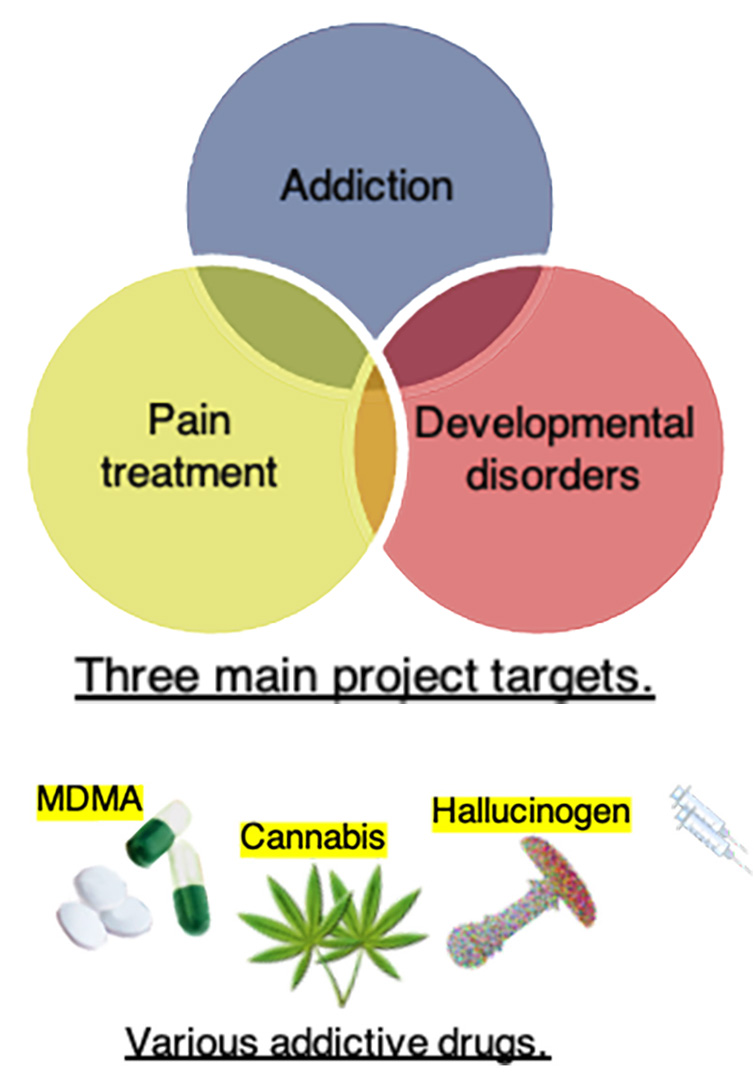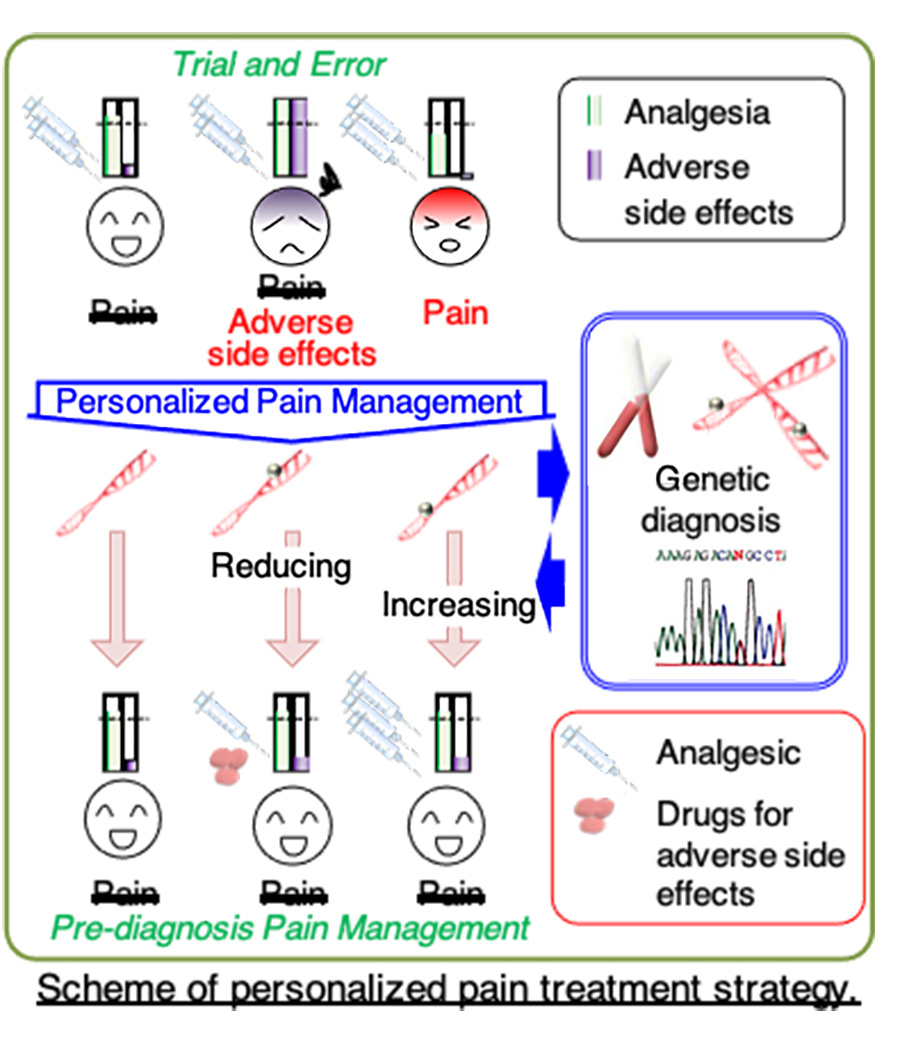
- HOME
- Addictive Substance Project
Addictive Substance Project
Identification of Action Mechanisms of Addictive Substances and Its Medical Applications
Research Summary
Addiction to various substances (e.g., drugs, alcohol, and tobacco) and behaviors (e.g., internet and gambling) is a serious public health problem. The use of illegal drugs has been increasing in Japan in recent years. Thus, preventing and solving problems that are related to addiction are important.
Some addictive drugs are also widely used as analgesics and for the treatment of developmental disorders. Some molecules that are involved in the actions of addictive drugs may be shared between analgesia and developmental disorders. The goals of our project are the following :
(1) Developing novel treatments for addiction and prevention. We study action mechanisms of opioids, dopamine, and hallucinogens such as phencyclidine to reveal the onset of addiction using several mouse models and behavioral pharmacological study. In parallel with the basic research, we also develop and verify a scale to addiction severity.
(2) Improving personalized pain treatment. Sensitivity of opioid analgesics is associated with polymorphisms of several genes. Based on the genome information, we develop personalized pain treatment.
(3) disorder (ADHD). In our project, tuberous sclerosis complex 1 and 2 hetero knockout mouse and dopamine transporter knockout mouse are mainly used as models of autism and ADHD, respectively. We are finding novel treatments for autism.
Attaining these goals will make significant contributions to society. We seek to accomplish these goals by studying the actions of addictive drugs using molecular biological, behavioral pharmacological, human genomic, and clinical approaches.


Selected Publications
- Kotajima-Murakami H, et al (2022). “Exposure to GABAA receptor antagonist picrotoxin in pregnant mice causes autism-like behaviors and aberrant gene expression in offspring.” Front Psychiatry 13:821354.
- Nishizawa D, et al. (2022) “Genome-wide association study identifies candidate loci associated with opioid analgesic requirements in the treatment of cancer pain.” Cansers 14:4692.
- Sato A and Ikeda K. (2022) “Genetic and environmental contributions to autism spectrum disorder through mechanistic target of rapamycin.” Biol Psychiatry: Glob Open Sci 2:95-105.
- Ide S, et al. (2021) “Caenorhabditis elegans exhibits morphine addiction-like behavior via the opioid-like receptor NPR-17.” Front Pharmacol, 12:802701
- Ohka S, et al. (2021) “Heparan sulfate 3-O-sulfotransferase 4 is genetically associated with herpes zoster and enhances varicella-zoster virus-mediated fusogenic activity.” Mol Pain 17:17448069211052171.
- Kasai S, et al. (2021) “Short tandem repeat variation in the CNR1 gene associated with analgesic requirements of opioids in postoperative pain management.” Front Genet 13:815089.
